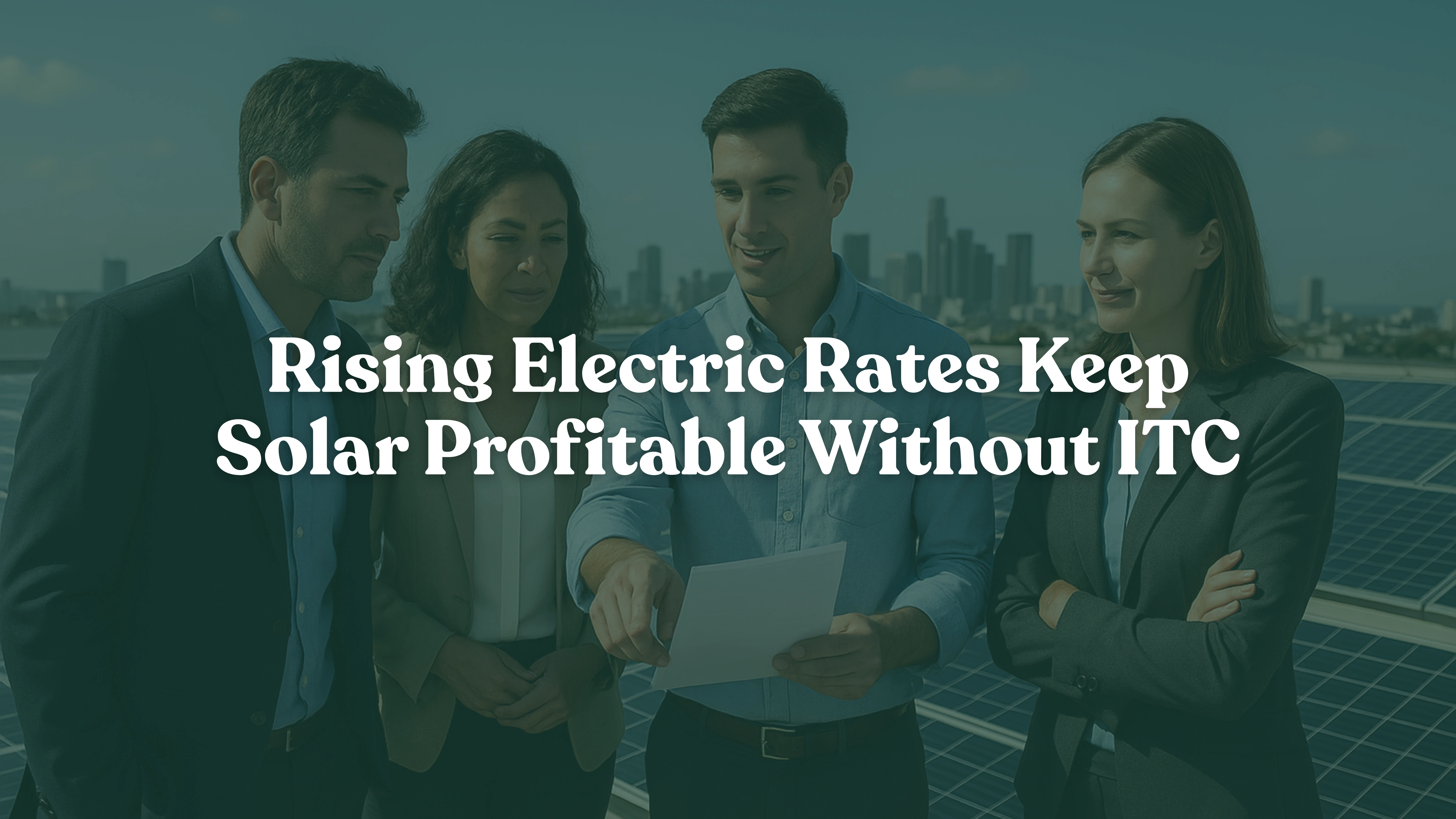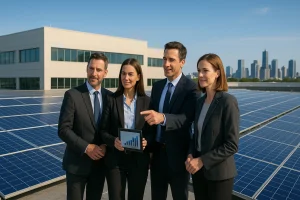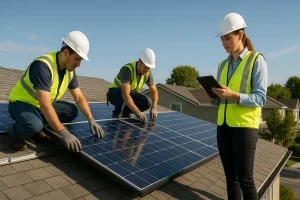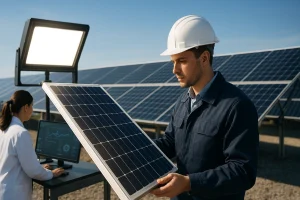Solar Still Profitable Without ITC Thanks to Higher Electric Rates

How Rising Electricity Rates Make Solar Still Profitable Without the ITC
The solar industry faces a turning point. With the 30% federal Investment Tax Credit (ITC) ending December 31, 2025, many solar installers and EPCs are questioning whether solar remains profitable for customers. However, rising electricity rates continue to outpace inflation, proving that solar is still profitable without the ITC and creating compelling economics for renewable energy investments even without federal incentives. Consequently, smart installers are already repositioning their value propositions around this fundamental market shift.
Why Solar Remains Profitable Without ITC: The Payback Reality
Although solar payback periods will extend by 43% without federal tax credits, they nevertheless remain attractive investments, keeping renewable energy systems financially viable. Furthermore, here’s what your customers can expect when photovoltaic systems prove economically sound without federal support:

Current vs. Future Payback Scenarios for Solar Investments
With 30% ITC (through 2025):
- Average residential payback: 7.1 years
- Commercial solar payback: 8-10 years
- Total system savings over 25 years: $40,000-$50,000
Post-ITC Economics (starting 2026):
- Residential payback extends to 10.5 years
- Commercial systems: 12-15 years
- Long-term profitability remains strong
Importantly, the key insight for installers is that payback periods under 15 years still represent excellent investments, especially when electricity rates continue their upward trajectory, ensuring renewable energy remains financially attractive.
Rising Electricity Rates: Making Solar Profitable Without ITC Support
Electricity rates increased 4.8% year-over-year in 2025, thereby creating unprecedented opportunities for solar sales teams and proving photovoltaic systems economically viable without federal incentives. Additionally, consider these market drivers that maintain solar profitability:
Electricity Rate Trends Supporting Solar Economics
High-Cost States Lead Growth:
- Connecticut: 30.24¢/kWh
- Massachusetts: 27.40¢/kWh
- Rhode Island: 27.84¢/kWh
National Average Increases:
- Average household bills rising $219 annually through 2025
- Electricity prices climbing twice as fast as overall inflation
- Moreover, residential rates are projected to rise 15-40% by 2030
Commercial Solar ROI: Profitable Without ITC Federal Incentives
Despite the ITC expiration, commercial installations maintain stronger economics post-federal credits, demonstrating how renewable energy systems deliver strong returns. In fact, recent analysis of 160+ commercial projects shows average ROI of 13.52% – nearly double typical stock market returns, proving commercial photovoltaic installations remain financially attractive.

Commercial Solar Economics by Installation Type
Roof-Mounted Systems:
- Average payback: 10.25 years
- Average ROI: 13.1%
- Lower installation complexity
Ground-Mounted Systems:
- Average payback: 11.85 years
- Average ROI: 12.4%
- Easier maintenance access
Therefore, for EPCs, the focus should be on commercial customers with high electricity usage and peak demand charges. These installations deliver faster paybacks even without federal incentives, keeping renewable energy systems economically viable.
State-Level Analysis: Where Solar Stays Profitable Without ITC
Your regional market determines photovoltaic viability post-federal credits, but many states demonstrate strong solar economics. Pennsylvania leads with 14.45% ROI and 9.42-year payback, while other states vary significantly. Accordingly, regional strategy becomes crucial for maintaining renewable energy profitability.
Top Performing Markets for Solar Investments
Immediate Opportunity States:
- Pennsylvania: 14.45% ROI, 9.42-year payback
- Maryland: 14.25% ROI, 9.82-year payback
- High electricity rate states maintain strong economics
Strategy for Lower-Rate Markets:
- Focus on larger system sizes
- Emphasize long-term savings
- Furthermore, target customers with high usage patterns
Solar Installation Timeline: Maximizing Profitable Opportunities
The ITC deadline creates urgency, but smart installers are planning beyond December 31st to ensure renewable energy systems remain financially attractive. Importantly, residential systems must be fully installed and operational before year-end to qualify – no safe harbor provisions exist.

Post-ITC Market Positioning Strategies
Key Messaging Points:
- Rising Utility Costs: Electric rates will continue rising, thus making solar payback increasingly attractive
- System Durability: Most residential systems last 25-30 years
- Long-term Value: Additionally, systems generate additional value beyond payback periods
Sales Process Adjustments:
- Extend sales cycles for 2026+ projects
- Focus on total lifetime savings over payback periods
- Moreover, emphasize energy independence and rate protection
Maximizing Solar ROI: Profitable Through System Optimization
Without federal incentives, system optimization becomes critical for keeping photovoltaic installations financially viable. Therefore, here’s how installers can deliver maximum value:
System Design for Optimal Returns
Size Systems Appropriately:
- Higher electricity costs shorten payback periods significantly
- Match system production to customer usage patterns
- Consider future electrification needs (EVs, heat pumps)
Component Selection:
- Choose high-efficiency panels for space-constrained projects
- Microinverters last 25 years vs. 10-15 for string inverters
- Additionally, prioritize warranty coverage and durability
Financial Analysis Tools for Solar Sales Success
Professional financial modeling becomes essential when payback periods extend but renewable energy systems remain economically attractive. Consequently, use these metrics to strengthen customer presentations:
Essential ROI Calculations
Solar Payback Formula:
Payback Period = (Total System Cost – Incentives) ÷ Annual Electricity Savings
Internal Rate of Return (IRR): Target IRR above 8% (historical stock market average) for compelling investments
Levelized Cost of Energy (LCOE): Furthermore, compare solar LCOE against escalating utility rates over 25 years
Commercial vs. Residential: Both Sectors Remain Economically Viable
Commercial solar maintains better incentive structure with Section 48E credit continuing, thus creating opportunities for EPCs to shift focus while residential photovoltaic systems stay financially attractive.

Commercial Market Advantages
Stronger Economics:
- Larger system sizes improve economies of scale
- Commercial customers face higher peak demand charges
- Additionally, multiple incentive layers remain available
Business Benefits Beyond Savings:
- Employee recruiting and retention advantages
- Improved company image and community reputation
- Moreover, carbon footprint reduction goals support investments
Marketing Solar in High Rate Markets: Strategic Approaches
States with expensive electricity maintain compelling solar economics, proving renewable energy financially viable in premium markets. Therefore, target these high-opportunity markets:
Premium Rate Markets Where Solar Stays Profitable Without ITC
Northeast Corridor:
- Pacific, Middle Atlantic, and New England regions see above-average price increases
- Established solar markets with educated customers
- Furthermore, strong local incentive programs exist
California and Western Markets:
- Investor-owned utilities increased T&D spending 300% since 2005
- Net metering changes create storage opportunities
- Additionally, high commercial electricity rates persist
Technology Trends Supporting Solar Economics
Equipment costs continue declining while efficiency improves, thereby supporting ROI and ensuring photovoltaic systems become increasingly attractive investments.

Equipment Cost Trends
Panel Efficiency Gains:
- Higher efficiency reduces installation costs per watt
- Fewer panels needed for same energy production
- Moreover, better performance in space-constrained applications
Balance of System Improvements:
- Streamlined permitting processes reduce soft costs
- Improved inverter reliability extends system life
- Furthermore, enhanced monitoring capabilities optimize performance
Conclusion: Partnering for Solar Success
The solar industry’s future remains bright despite ITC expiration, with renewable energy remaining profitable without ITC across multiple market segments. Rising electricity rates, improving technology, and growing energy independence demand create sustainable market conditions. However, success requires professional engineering, efficient project execution, and compelling financial presentations that demonstrate solar profitable without ITC.
Energyscape Renewables provides comprehensive support for solar installers and EPCs navigating the post-ITC landscape where photovoltaic systems stay economically viable. Our engineering services, permit-ready plan sets, PE stamping, and interconnection support help you deliver projects faster and more profitably. Additionally, with tools like the Sunscape Site Survey App and integrated CRM, we streamline your operations from initial site assessment through final commissioning.
The Sunscape platform offers advanced design tools and project management capabilities that reduce development timelines and improve customer experiences. Even with extended payback periods, solar remains an excellent investment when properly designed and professionally executed, proving renewable energy systems financially sustainable.
Therefore, partner with Energyscape Renewables to capitalize on rising electricity rates and maintain profitable solar installations in 2025 and beyond, ensuring your business thrives in the evolving energy landscape.

sjayakanth@energyscaperenewables.com